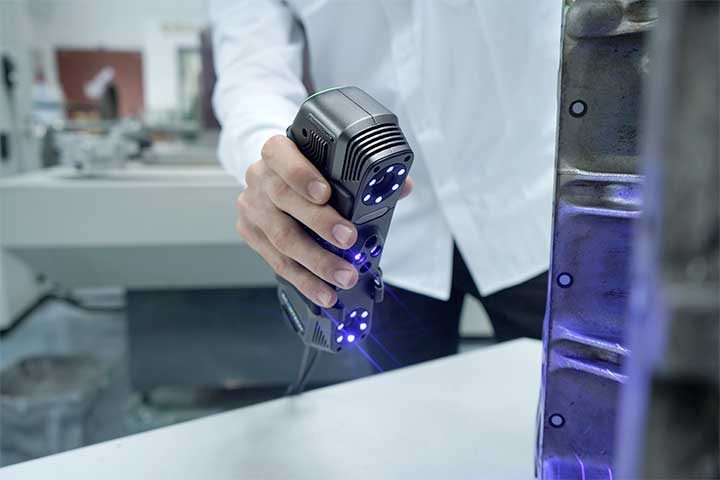
Introduction:
In the rapidly evolving landscape of 3D technology, 3D scanners have emerged as indispensable tools, empowering professionals, hobbyists, and industries with the ability to capture the physical world in intricate digital detail. From manufacturing and design to healthcare and cultural preservation, the applications of 3D scanning are vast and diverse. In this extensive guide, we will delve into the world of 3D scanning, exploring key considerations, technical specifications, and top recommendations for the best 3D scanners across different categories.
I. Understanding 3D Scanning Technology:
A. Principles of 3D Scanning: 3D scanning is a process that captures the geometry and appearance of physical objects and environments, creating a digital representation in three-dimensional space. Different technologies, such as laser, structured light, and photogrammetry, are employed to achieve accurate and detailed 3D scans.
B. Types of 3D Scanners:
- Laser Scanners:
- Utilize laser beams to measure distances and create precise point clouds.
- Ideal for capturing fine details and complex geometries.
- Often used in industrial and engineering applications.
- Structured Light Scanners:
- Project patterns of light onto surfaces and analyze distortions to create 3D models.
- Suitable for capturing detailed textures and color information.
- Commonly used in cultural heritage preservation and animation.
- Photogrammetry Scanners:
- Rely on photographs taken from multiple angles to reconstruct 3D geometry.
- Ideal for capturing large objects and environments.
- Widely used in fields like archaeology and virtual tourism.
- Contact Scanners:
- Physically touch the surface of an object to capture its shape and features.
- Suitable for high-precision applications like dental scanning and reverse engineering.
II. Key Considerations for Choosing a 3D Scanner:
A. Accuracy and Resolution:
- The level of detail a 3D scanner can capture is determined by its accuracy and resolution.
- Higher accuracy and resolution are essential for applications such as quality control and precision engineering.
B. Scanning Speed:
- Scanning speed varies among different scanners, and it’s crucial to consider the time required for capturing a complete scan.
- Faster scanners are advantageous for industries with high-throughput requirements.
C. Portability and Size:
- Consider the size and weight of the 3D scanner, especially if portability is a key requirement.
- Handheld and portable scanners are preferred for on-site inspections and fieldwork.
D. Scan Volume:
- The size of the objects you intend to scan should align with the scanner’s scan volume.
- Larger scan volumes are suitable for scanning bigger objects, while smaller volumes may be sufficient for intricate details.
E. Color Scanning:
- Some applications, such as animation and cultural heritage preservation, benefit from scanners with color capture capabilities.
- Color scanning enhances the visual fidelity of 3D models.
III. Top Recommendations for 3D Scanners:
A. Creaform HandySCAN 3D:
- Utilizes laser technology for high-precision scanning.
- Portable and suitable for applications like reverse engineering and quality control.
- Offers impressive accuracy and resolution.
B. Artec Eva:
- A structured light scanner known for its versatility and ease of use.
- Captures color information, making it suitable for applications in animation and design.
- Ideal for scanning medium-sized objects with high detail.
C. Faro Focus S Series:
- Laser scanners designed for capturing large environments and structures.
- High-speed scanning with excellent accuracy.
- Widely used in industries such as construction, surveying, and forensics.
D. HP 3D Structured Light Scanner Pro S3:
- A structured light scanner with a compact design.
- Suitable for small to medium-sized objects and ideal for 3D printing applications.
- Provides high-resolution and color scanning capabilities.
E. Shining 3D EinScan Pro 2X Plus:
- A versatile handheld 3D scanner with both laser and structured light scanning modes.
- Offers high accuracy and a large scan volume.
- Suitable for applications ranging from industrial design to healthcare.
IV. Applications of 3D Scanning:
A. Industrial Design and Engineering:
- 3D scanning aids in product design, prototyping, and quality control, streamlining the manufacturing process.
B. Healthcare and Orthopedics:
- Used for creating customized medical implants, orthotics, and prosthetics based on patient-specific anatomical data.
C. Cultural Heritage Preservation:
- 3D scanning contributes to the preservation of historical artifacts, monuments, and artworks by creating detailed digital replicas.
D. Virtual and Augmented Reality:
- 3D scanning facilitates the creation of immersive virtual and augmented reality experiences by capturing real-world objects and environments.
E. Reverse Engineering:
- Essential for replicating existing components, optimizing designs, and conducting forensic analysis in engineering and manufacturing.
F. Entertainment and Animation:
- 3D scanning is widely used in the entertainment industry for character modeling, animation, and special effects.
V. Future Trends in 3D Scanning:
A. Artificial Intelligence Integration:
- The integration of AI algorithms is expected to enhance the automation of data processing and improve the accuracy of 3D scans.
B. Augmented Reality Synergy:
- The synergy between 3D scanning and augmented reality is likely to become more pronounced, enabling real-time interaction with scanned objects.
C. Consumer-Level Scanners:
- As technology advances, the development of more affordable and user-friendly consumer-level 3D scanners is anticipated.
D. Increased Portability:
- The trend towards more portable and handheld 3D scanners is expected to continue, catering to a broader range of applications.
Conclusion:
In the dynamic world of 3D scanning, the diverse array of applications, technologies, and considerations can be both exciting and overwhelming. Whether you’re a professional in manufacturing, healthcare, design, or a hobbyist exploring the possibilities of 3D scanning, understanding the nuances of available technologies and choosing the right scanner for your needs is paramount. The top recommendations provided, along with key considerations and insights into the applications of 3D scanning, serve as a comprehensive guide for those embarking on their journey into the fascinating realm of three-dimensional capture. As technology continues to advance, the evolution of 3D scanning promises even more groundbreaking possibilities, pushing the boundaries of what can be achieved in fields ranging from art and design to engineering and healthcare.